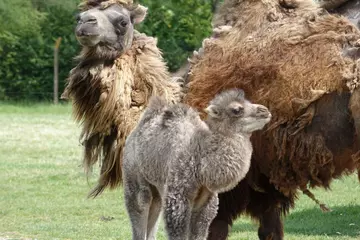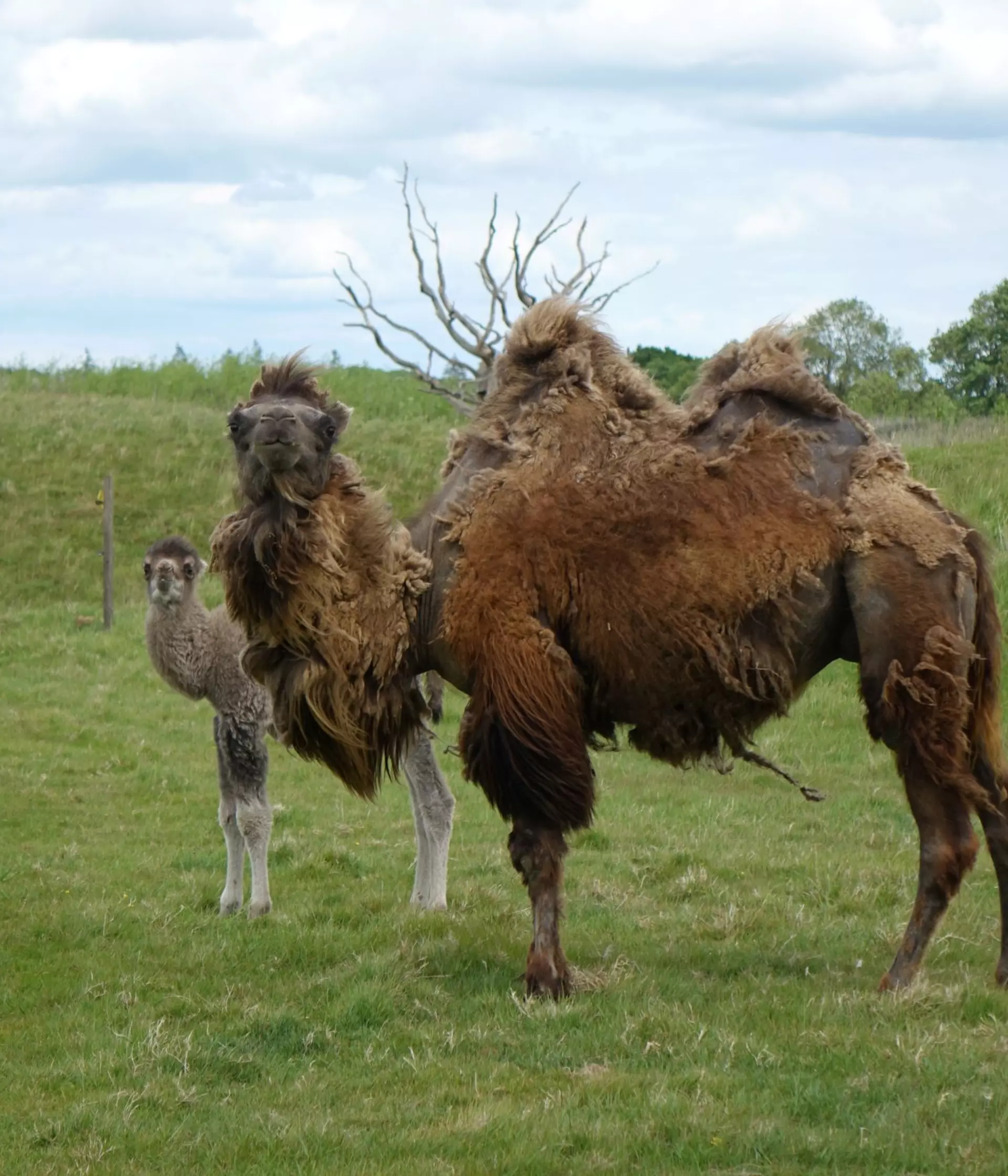
Are there Domestic Bactrian camels at Whipsnade Zoo?
Whipsnade is home a herd of domestic Bactrian camels who live in the Passage through Asia drive-through alongside our herd of Przewalski’s horse and domestic yak.

How are camels adapted to their habitat?
Bactrian camels have two large humps on their back which store fat and can be converted into energy when food is scarce. Their long thick woolly coat varies in colour from sandy beige to dark brown. Once a year they shed this coat in the summer months are re-grow it for winter meaning they can withstand extreme temperatures of up to -40C in winter and +40C in summer.
What do they eat?
Camels will eat a variety of vegetation including grasses, leaves and thorny plants.

What threats do camels face in the wild?
Bactrian camels are an ambassador species for the Critically Endangered wild camel (Camelus ferus). There are only around 1,000 individuals left in the wild, and the main threats are hunting and habitat loss with the remaining habitat being degraded by domestic livestock.
Whipsnade Zoo is part of ZSL, a global conservation charity, working to protect wildlife and restore habitats around the world. We're supporting conservation efforts in Mongolia, including the Gobi Desert in the south, where it’s believed there are only 450 wild camels.
Protecting camels in the wild
The domestic Bactrian camel you'll see at Whipsnade Zoo is a separate species to the Critically Endangered wild camel.
Our conservationists at ZSL are working to protect these camels in the wild - every visit to the Zoo is helping to support this vital work.
